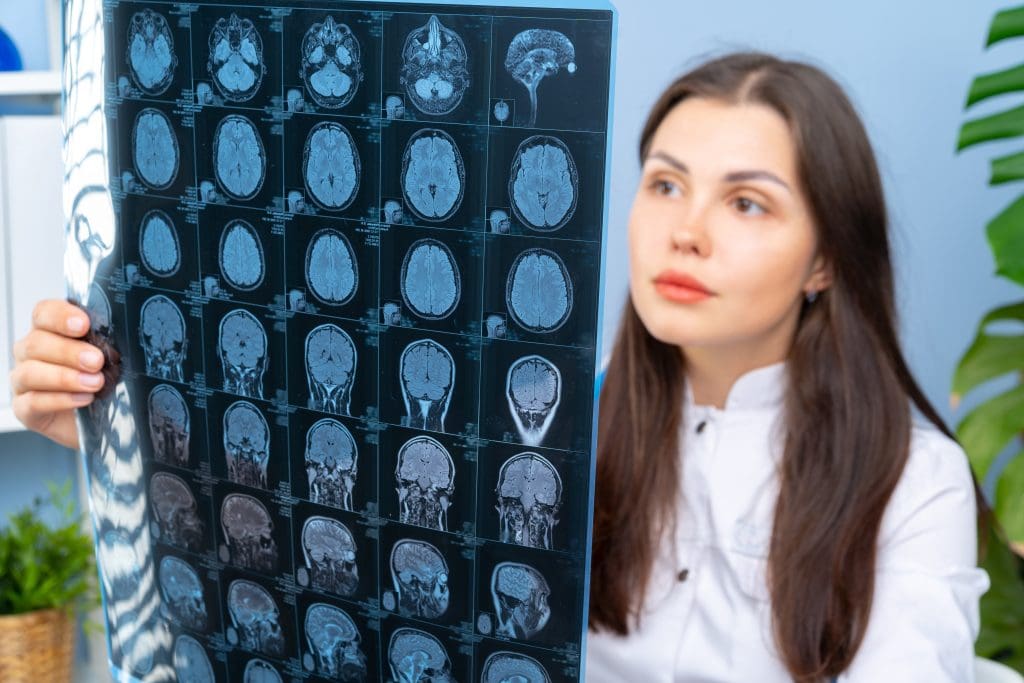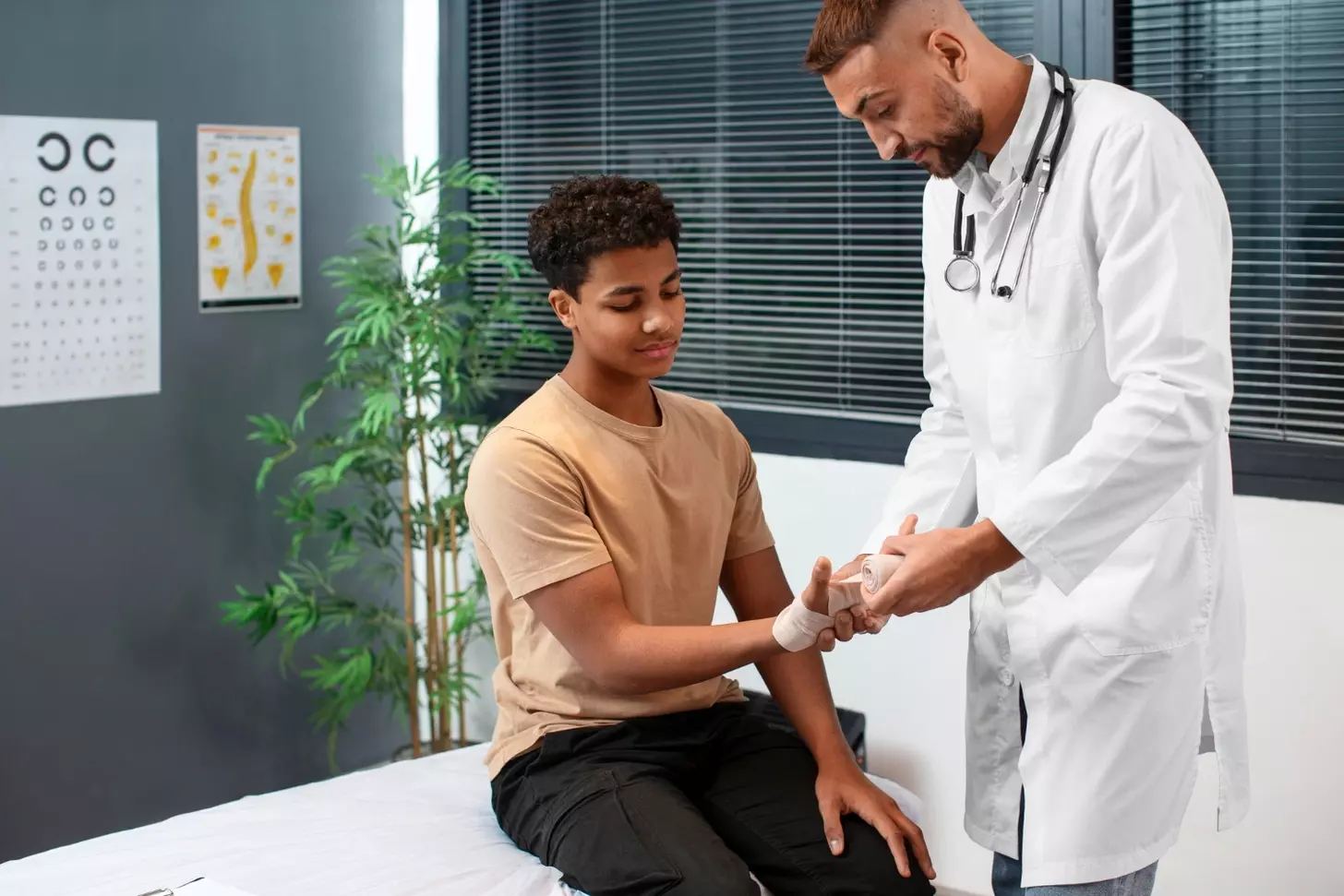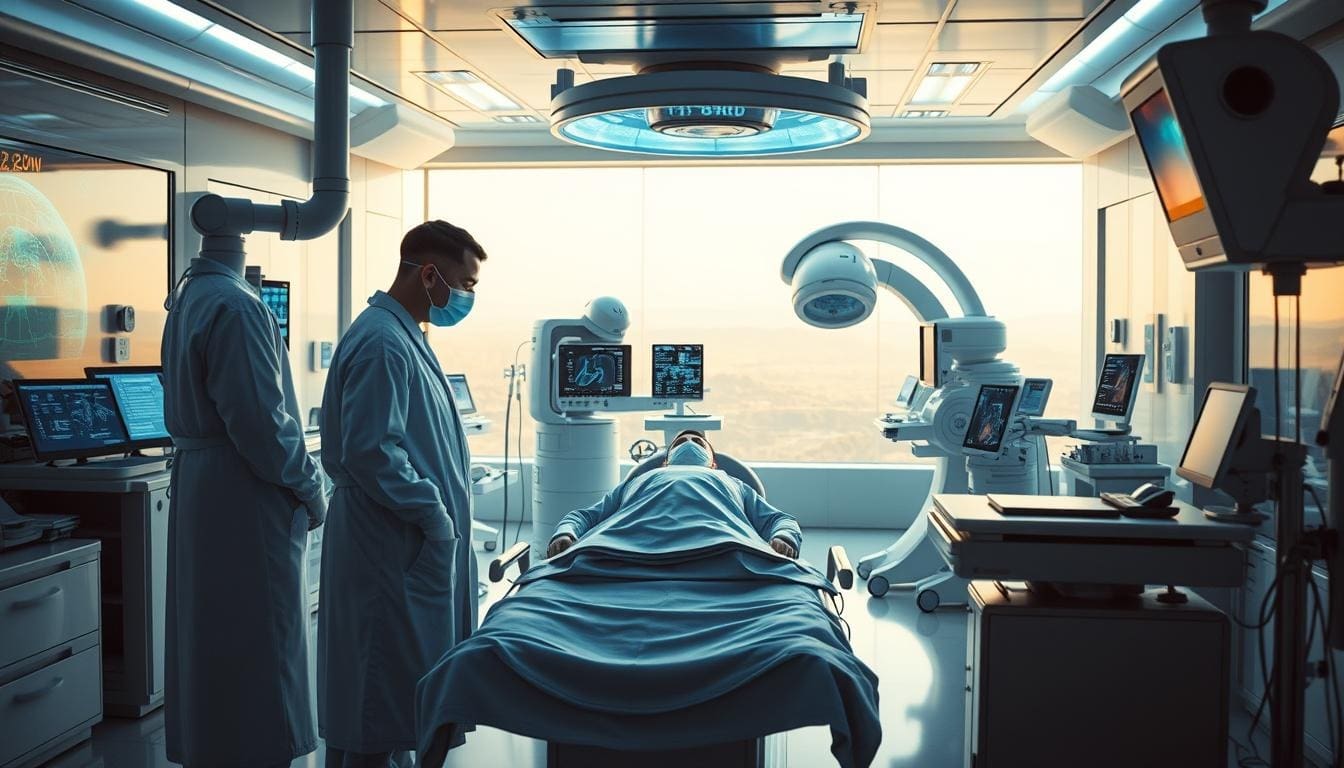Last Updated on November 27, 2025 by Bilal Hasdemir
Did you know brain imaging can find specific brain types? This helps tailor treatment for mental health issues and is crucial in determining the best brain scan for mental illness for each individual. This tech has changed mental health diagnosis.
Brain MRI is key in mental disorder imaging. It lets doctors understand the brain better. This info is key for good treatment plans.
A psychiatric assessment checks a patient’s mental health fully. Using brain imaging, doctors can diagnose better. They can then create treatment plans that really work.
Key Takeaways
- Brain imaging technology can help identify specific brain types.
- Mental disorder imaging is key for accurate diagnosis.
- Brain MRI is a vital tool in mental health diagnosis.
- A psychiatric assessment involves a full check-up.
- Effective treatment plans can be made with brain imaging.
The Intersection of Neuroscience and Mental Health

The field where neuroscience meets mental health is growing fast. It’s full of hope for better care in psychiatry. Studies show that neuroimaging can find signs of mental health issues. This opens up new ways to diagnose and treat.
The Brain-Mental Health Connection
The link between the brain and mental health is very complex. Research shows that brain problems are linked to many mental health issues. Neuroimaging techniques help us see these problems. They give us clues about what’s happening in the brain.
The Evolution of Neuroimaging in Psychiatry
Neuroimaging has changed psychiatry a lot. It lets us look at the brain without surgery. With functional MRI (fMRI) and positron emission tomography (PET), we can see how the brain works. This helps us understand mental health better and tailor treatments.
But, there are limits to using neuroimaging in psychiatry. It’s hard to get clear pictures and understand what they mean. Yet, using neuroimaging in psychiatric assessment is a big step forward in mental health care.
Types of Brain Imaging Technologies in Psychiatric Assessment
Different brain imaging technologies are used in psychiatric assessment. They help look at brain structure and function. These tools have changed how we diagnose and treat mental health issues.
Structural vs. Functional Imaging
Brain imaging can be split into structural and functional types. Structural imaging, like structural MRI, shows detailed brain anatomy. It helps find any brain structure problems. On the other hand, functional imaging, such as functional MRI (fMRI), looks at brain activity. It does this by tracking blood flow changes.
Invasive vs. Non-invasive Techniques
Brain imaging can also be invasive or non-invasive. Non-invasive methods, like MRI and EEG, don’t need to go inside the body. This makes them safer for patients. Invasive methods, like PET scans, involve putting substances into the body. Knowing the good and bad of each is key to picking the right imaging for psychiatric checks.
Structural MRI: Examining Brain Anatomy
Structural MRI is a key tool for understanding the brain’s structure. It helps in diagnosing mental health issues. High-resolution images from Structural MRI show brain abnormalities linked to mental disorders.
How Structural MRI Works
Structural MRI uses a strong magnetic field and radio waves. It creates detailed brain images without surgery or harmful radiation. This makes it a safe and effective way to see the brain’s structure.
Applications in Mental Health Disorders
Structural MRI is used in mental health studies. It helps in understanding depression, schizophrenia, and anxiety. The technique shows how brain structure changes with these conditions.
Limitations and Considerations
Structural MRI has its limits. It doesn’t show brain function. Also, interpreting images needs expert knowledge. Yet, it’s a vital tool for studying mental health disorders.
Functional MRI (fMRI): Visualizing Brain Activity
Researchers and clinicians can now see brain function with fMRI. This non-invasive method measures brain activity by tracking blood flow changes.
Principles of fMRI Technology
fMRI works because brain activity and blood flow go hand in hand. When the brain is active, more blood flows to that area. It uses the difference in magnetic properties of oxygen-rich and oxygen-poor hemoglobin.
Clinical Applications in Psychiatry
In psychiatry, fMRI spots brain activity patterns linked to mental health issues. It sheds light on the brain circuits behind depression, anxiety, and schizophrenia.
Research Findings and Limitations
Studies with fMRI have given us deep insights into psychiatric disorders. Yet, it faces challenges like high costs, limited access, and complex data analysis.
| Aspect | Description | Impact on Psychiatry |
| Technology Basis | Measures changes in blood flow | Non-invasive assessment of brain activity |
| Clinical Application | Identifies patterns of brain activity | Helps in diagnosing and understanding mental health disorders |
| Research Findings | Insights into neural mechanisms | Advances understanding of psychiatric conditions |
| Limitations | High cost, limited availability | Restricts widespread use in clinical practice |
PET Scans: Measuring Metabolic Activity
Positron Emission Tomography (PET) scans give us a peek into the brain’s metabolic processes. They help diagnose mental health conditions. By using small amounts of radioactive tracers, PET scans measure brain region activity.
How PET Scanning Works
PET scanning involves injecting a radioactive tracer into the bloodstream. This tracer builds up in brain areas with high activity. The PET scanner then detects this radiation, creating detailed brain metabolism images.
Applications in Mental Health Assessment
PET scans are used to study mental health disorders like depression, schizophrenia, and Alzheimer’s. They help doctors understand metabolic changes in these conditions.
Advantages and Disadvantages
PET scans offer insights into brain metabolism and detect neurological conditions well. But, they involve small radiation exposure and are pricey.
| Imaging Technique | Metabolic Information | Radiation Exposure |
| PET Scan | High | Yes |
| MRI | Limited | No |
| CT Scan | Limited | Yes |
SPECT Brain Imaging: Blood Flow Patterns
SPECT imaging shows how blood flows in the brain. This helps doctors diagnose and treat mental health issues. SPECT is a way to see brain activity and find problems.
Understanding SPECT Technology
SPECT uses a tiny amount of radioactive tracer. It’s injected into the blood and goes to the brain. The scanner then makes a 3D image of brain activity.
Applications in Mental Health
SPECT helps with many mental health issues. It looks at blood flow to understand brain problems. This helps doctors treat patients better.
Comparing SPECT to Other Modalities
SPECT is different from MRI or CT scans. It’s good for certain things they can’t do. Here’s a comparison:
| Imaging Modality | Primary Use | Key Features |
| SPECT | Cerebral blood flow assessment | Functional information, relatively low cost |
| MRI | Structural and functional assessment | High-resolution images, versatile |
| CT Scan | Structural assessment, acute injuries | Quick, widely available |
SPECT gives important information for diagnosing mental health issues.
Electroencephalography (EEG): Measuring Brain Waves
EEG helps us understand brain waves, which is key for diagnosing mental health issues. It measures the brain’s electrical activity. This gives us insights into how the brain works, which is vital for psychiatric assessments.
EEG Technology and Process
EEG uses electrodes on the scalp to record brain activity. It’s a non-invasive method that shows brain wave patterns. These patterns change based on our mental state or certain psychiatric conditions.
The process is simple: electrodes are placed in a specific way. Recordings can happen during rest, sleep, or while doing tasks.
Applications in Psychiatric Disorders
EEG is useful in many ways for psychiatric disorders, including:
- Diagnosing and monitoring epilepsy and seizure disorders
- Assessing brain activity in patients with psychiatric conditions such as depression, anxiety, and schizophrenia
- Monitoring the effectiveness of treatments
Benefits and Limitations
EEG has many benefits like being non-invasive and affordable. It also gives us real-time data on brain activity. But, it has some downsides too.
For example, it can pick up on external or muscle activity. Also, it needs experts to understand the data correctly.
The Role of Neuroimaging in Differential Diagnosis
Neuroimaging technologies give us detailed brain images. This helps doctors get better at diagnosing mental health issues. It’s key in figuring out what’s wrong when symptoms seem the same.
Distinguishing Between Similar Presentations
Neuroimaging lets doctors tell apart conditions like depression and anxiety. For example, functional MRI (fMRI) shows how the brain works differently in each case. This helps doctors make more precise diagnoses.
Ruling Out Organic Causes
Neuroimaging also helps rule out physical causes of mental symptoms. Structural MRI gives clear images of the brain’s structure. This is great for spotting issues like tumors or blood vessel problems.
Case Studies and Examples
Many case studies show how useful neuroimaging is. For instance, a patient with dementia symptoms might get a PET scan. This helps figure out if it’s Alzheimer’s or something else. Such examples show how neuroimaging can guide treatment and improve care.
In short, neuroimaging is a key tool in diagnosing mental health issues. It provides insights that lead to better diagnoses and treatment plans.
Comprehensive Psychiatric Assessment: Integrating Multiple Approaches
Using clinical interviews, psychological tests, and neuroimaging makes psychiatric assessments more accurate. A detailed evaluation is key to grasping the complexities of mental health issues.
Clinical Interviews and Observations
Clinical interviews offer deep insights into a patient’s symptoms, medical background, and personal life. Observations of patient behavior and demeanor during the interview also provide critical clues. These interviews are essential for building trust with the patient and collecting initial data for diagnosis.
Psychological Testing
Psychological testing, like standardized questionnaires and cognitive assessments, quantifies symptoms and brain function. These tests can spot specific patterns linked to various mental health issues, aiding in diagnosis. The findings help shape treatment plans and track progress over time.
Combining Imaging with Other Diagnostic Tools
Neuroimaging, such as MRI or PET scans, when combined with clinical interviews and psychological testing, offers a fuller view of mental health disorders. This approach can reveal brain abnormalities linked to certain conditions, improving diagnosis and treatment planning.
By merging these methods, doctors can gain a deeper understanding of a patient’s condition. This leads to more effective treatment plans.
Practical Considerations: Access, Cost, and Patient Experience
Neuroimaging in psychiatric assessment is shaped by several practical factors. These factors greatly affect how well and easily neuroimaging can be used in mental health care.
Insurance Coverage and Affordability
Insurance coverage and the cost of neuroimaging are key concerns. Procedures like brain MRI and PET scans are expensive. Insurance varies, leading to high out-of-pocket costs for patients.
Availability of Technology
Access to neuroimaging technology is also vital. Techniques like SPECT brain imaging are not everywhere. Rural areas often lack these facilities, causing unequal access to care.
What Patients Can Expect During Scanning
The experience of patients during scanning matters a lot. For example, EEG scans require patients to stay very quiet for a long time. Knowing what to expect can help reduce anxiety and improve the scan’s quality.
| Neuroimaging Technique | Cost | Availability | Patient Experience |
| brain MRI | High | Moderate | Variable |
| PET scan | High | Limited | Moderate |
| SPECT brain | Moderate | Limited | Moderate |
| EEG | Moderate | High | Variable |
The Future of Brain Imaging in Mental Health Care
New technologies in brain imaging are changing mental health care. They are making diagnoses more accurate and leading to treatments that fit each person better.
Emerging Technologies
New tools are being made to make brain imaging better. For example, diffusion tensor imaging (DTI) shows how brain tissues are structured. This helps doctors understand mental health disorders better.
Machine Learning and AI Applications
Machine learning is being used with brain imaging to improve diagnosis. AI applications can spot patterns in data that humans might miss. This could mean catching problems sooner.
Personalized Medicine Approaches
The future of mental health care is personalized medicine. Treatments will be made just for each person, based on their brain scans. This could make treatments work better and help patients more.
Conclusion: Selecting the Optimal Brain Scan for Mental Illness
Choosing the right brain scan for mental illness is a big decision. It involves looking at different imaging options and their limits. A full psychiatric check-up often uses several tools, like brain MRI, to get a clear diagnosis.
Brain imaging tools, like MRI and PET scans, help a lot in checking mental health. It’s important for doctors to know what each tool can do well and its limits. This helps them make the best choice for each patient.
Doctors must think about the patient’s mental health issue, their needs, and practical things like cost and access. Using brain scans along with talking to the patient and doing tests helps doctors understand better. This way, they can give better care.
As brain imaging gets better, it will play a bigger role in diagnosing mental health issues. Keeping up with new brain imaging tech helps doctors give the best care to their patients.
FAQ
What is the best brain scan for diagnosing mental illness?
The best brain scan for diagnosing mental illness varies by condition and patient needs. Different scans, like MRI and PET scans, offer unique insights into brain health.
How does neuroimaging help in psychiatric assessment?
Neuroimaging provides valuable information about brain health. It helps in diagnosing and planning treatments. Techniques like MRI can spot abnormalities in brain regions linked to mental health.
What is the difference between structural and functional imaging?
Structural imaging, like MRI, shows brain anatomy. Functional imaging, like fMRI, measures brain activity. Structural imaging finds structural issues, while functional imaging shows activity changes.
Can brain scans diagnose mental illness?
Brain scans can help diagnose mental illness but are not enough on their own. They must be used with clinical symptoms and medical history.
What are the limitations of using neuroimaging in mental health diagnosis?
Neuroimaging has its limits, like complex interpretations and the need for expertise. It’s not a single tool for diagnosis but should be used with other methods.
How does EEG technology work?
EEG technology measures brain electrical activity through scalp electrodes. It’s used to diagnose and monitor conditions like epilepsy and sleep disorders.
What is the role of PET scans in mental health assessment?
PET scans measure brain metabolic activity. They help identify brain function issues related to mental health. They’re used to assess treatment response and disease progression.
How does SPECT brain imaging compare to other imaging modalities?
SPECT brain imaging looks at blood flow patterns in the brain. It’s similar to PET scans but has its own advantages, like being more available and less expensive.
What are the practical considerations for using neuroimaging in psychiatric assessment?
Practical considerations include access, cost, and patient experience. Factors like insurance, technology availability, and patient comfort are important.
What is the future of brain imaging in mental health care?
The future of brain imaging in mental health care looks promising. New technologies like AI and personalized medicine are expected to improve diagnosis and treatment outcomes.
How can I choose the most appropriate imaging modality for mental health diagnosis?
Choosing the right imaging modality depends on the condition and patient needs. Consulting with a mental health professional or radiologist can help determine the best approach.






